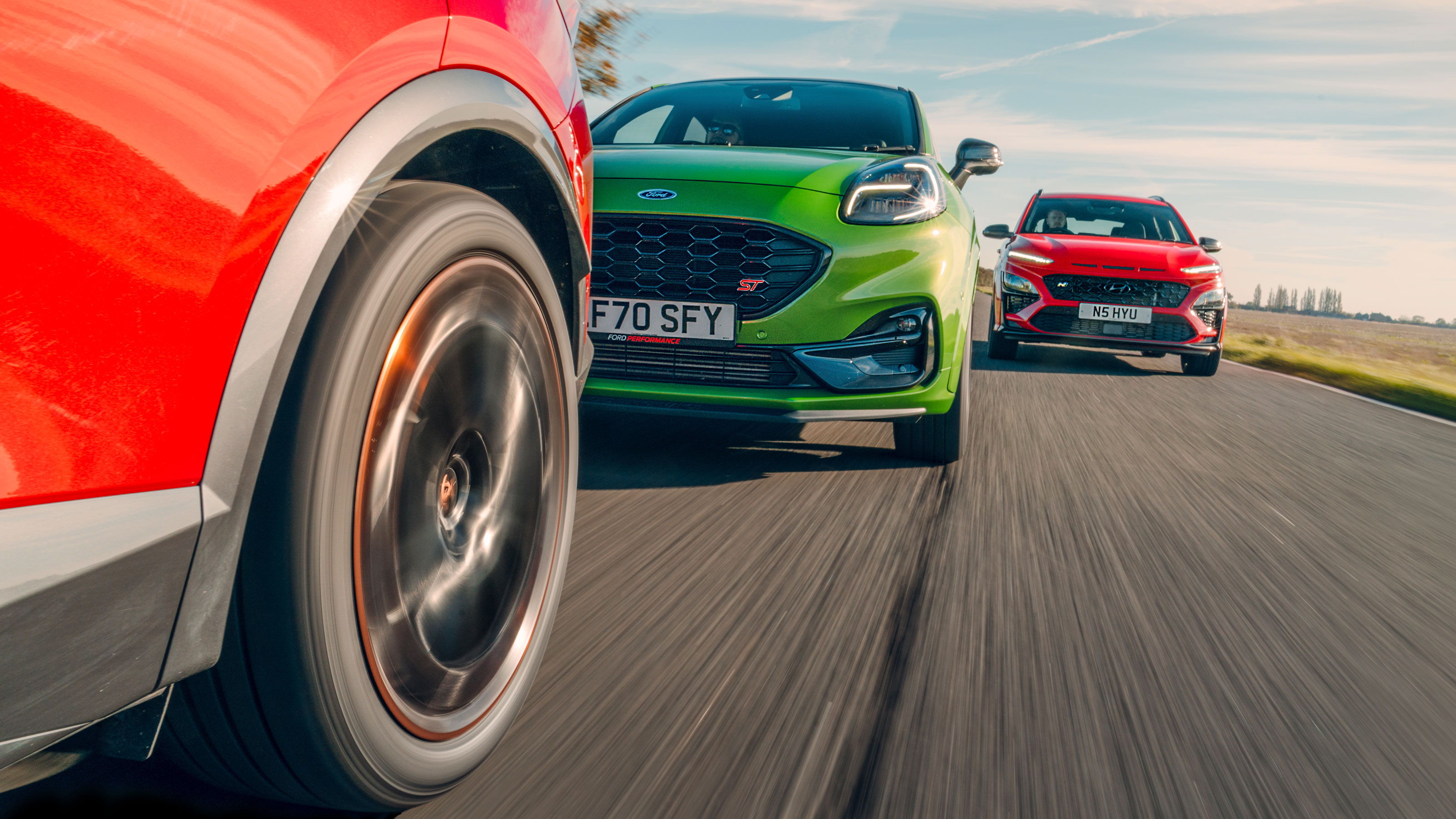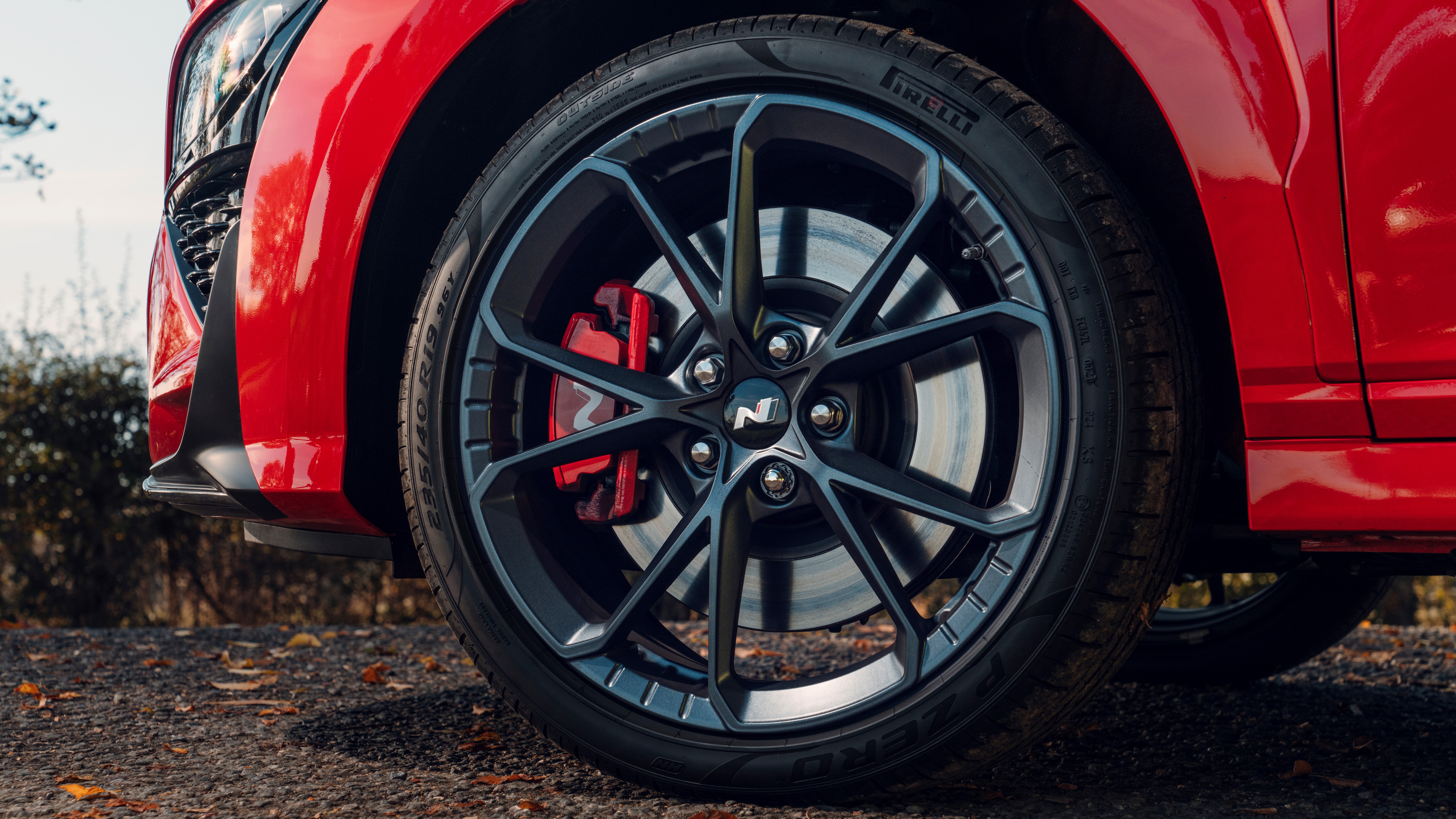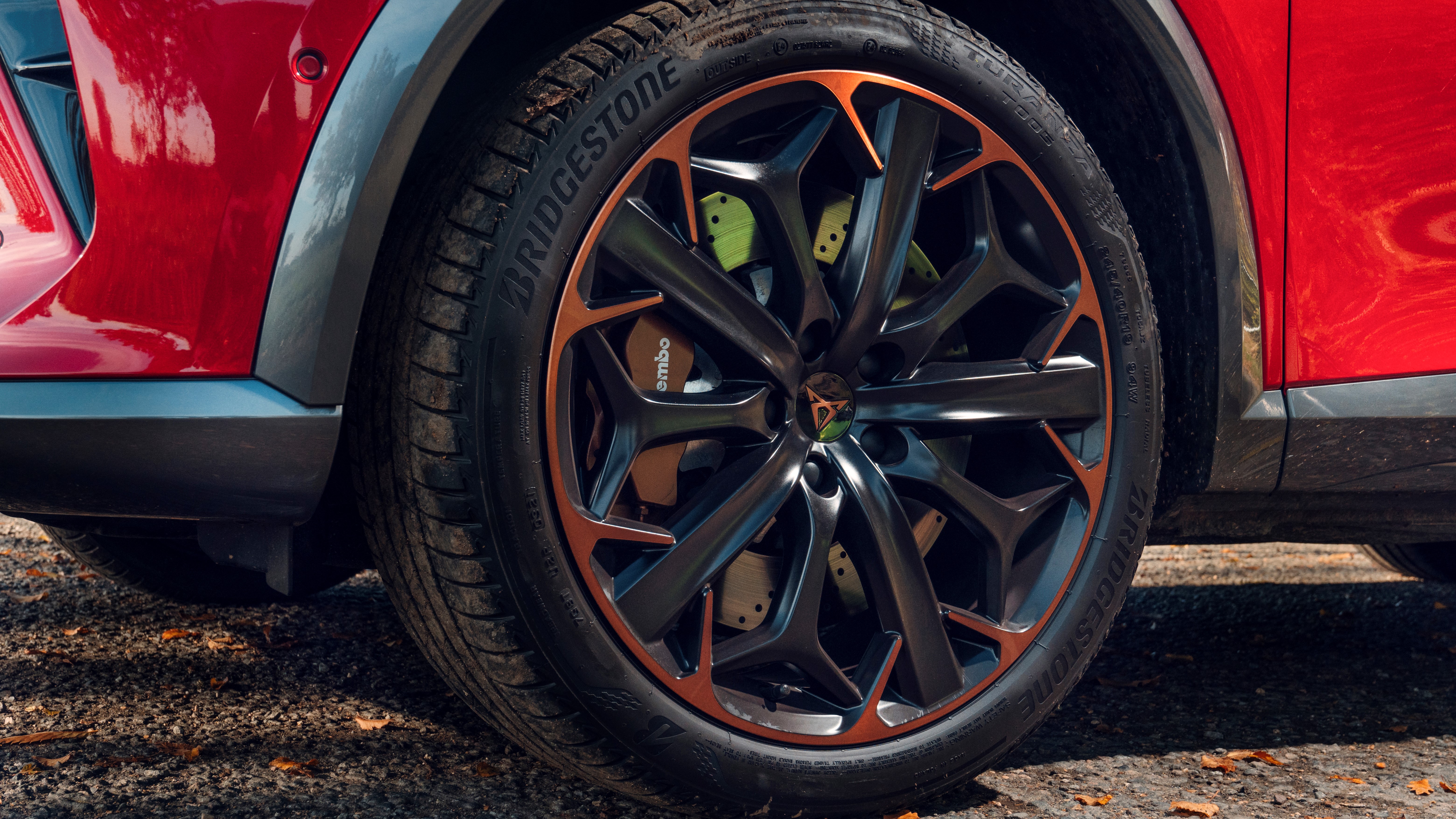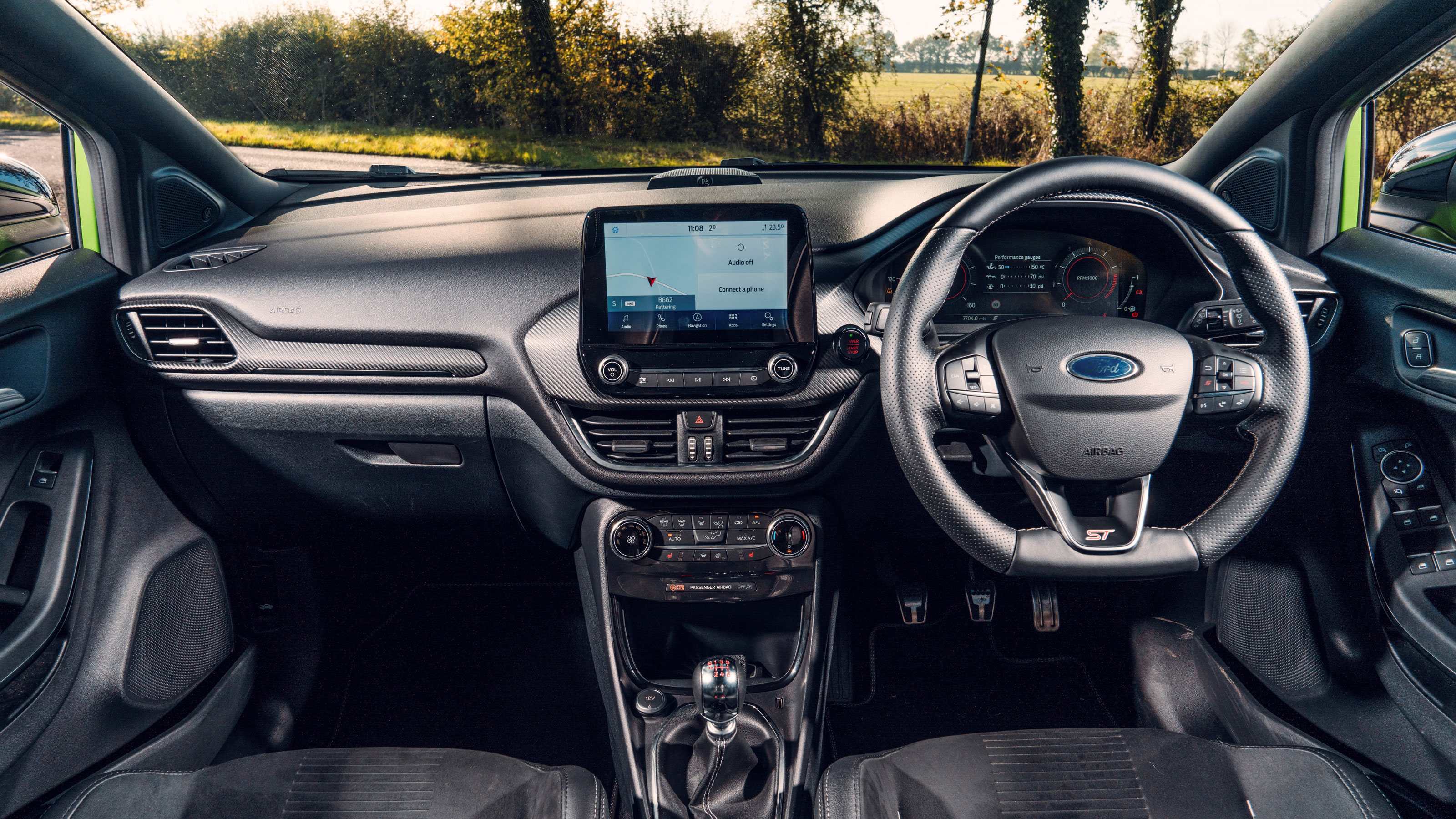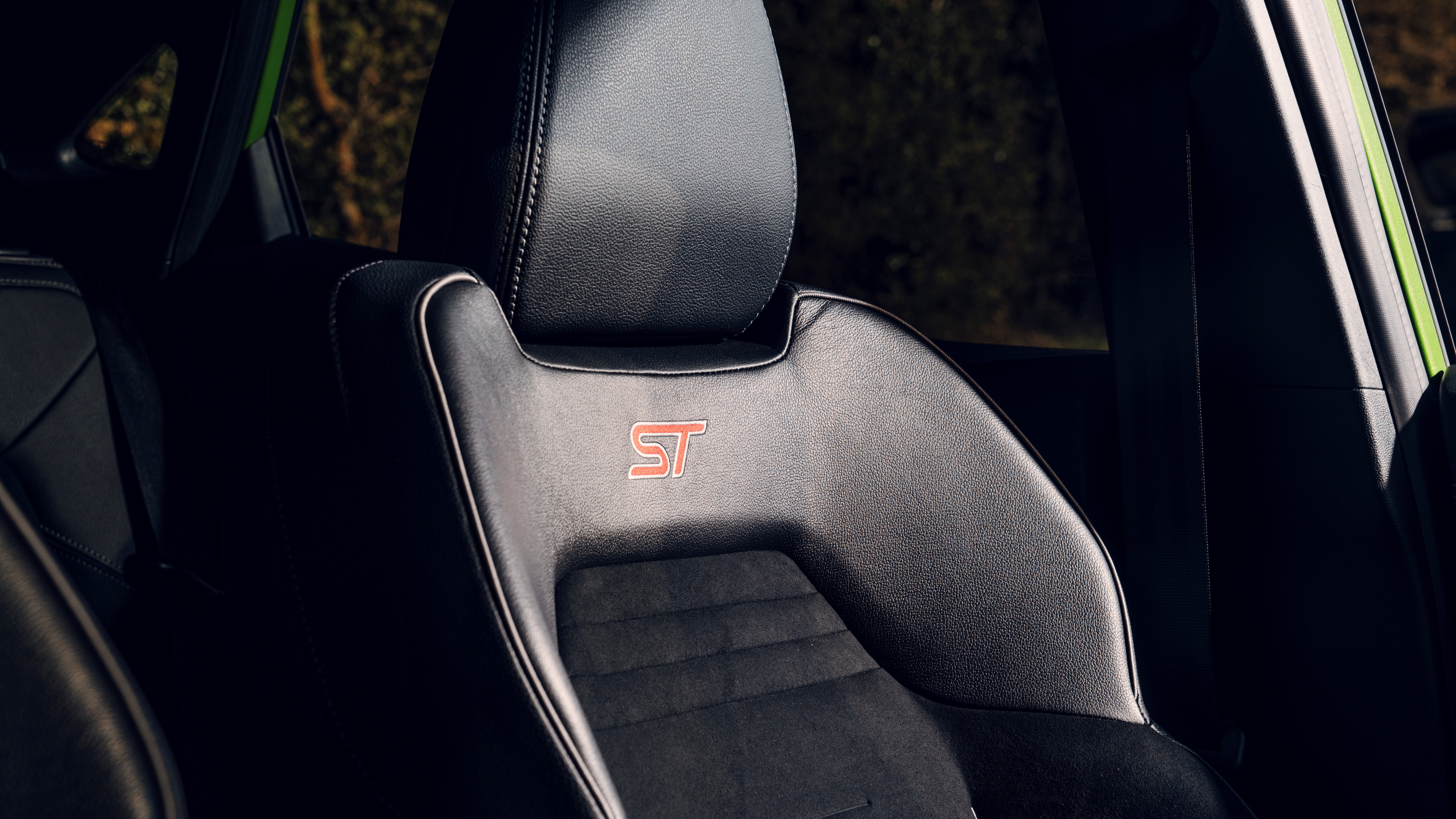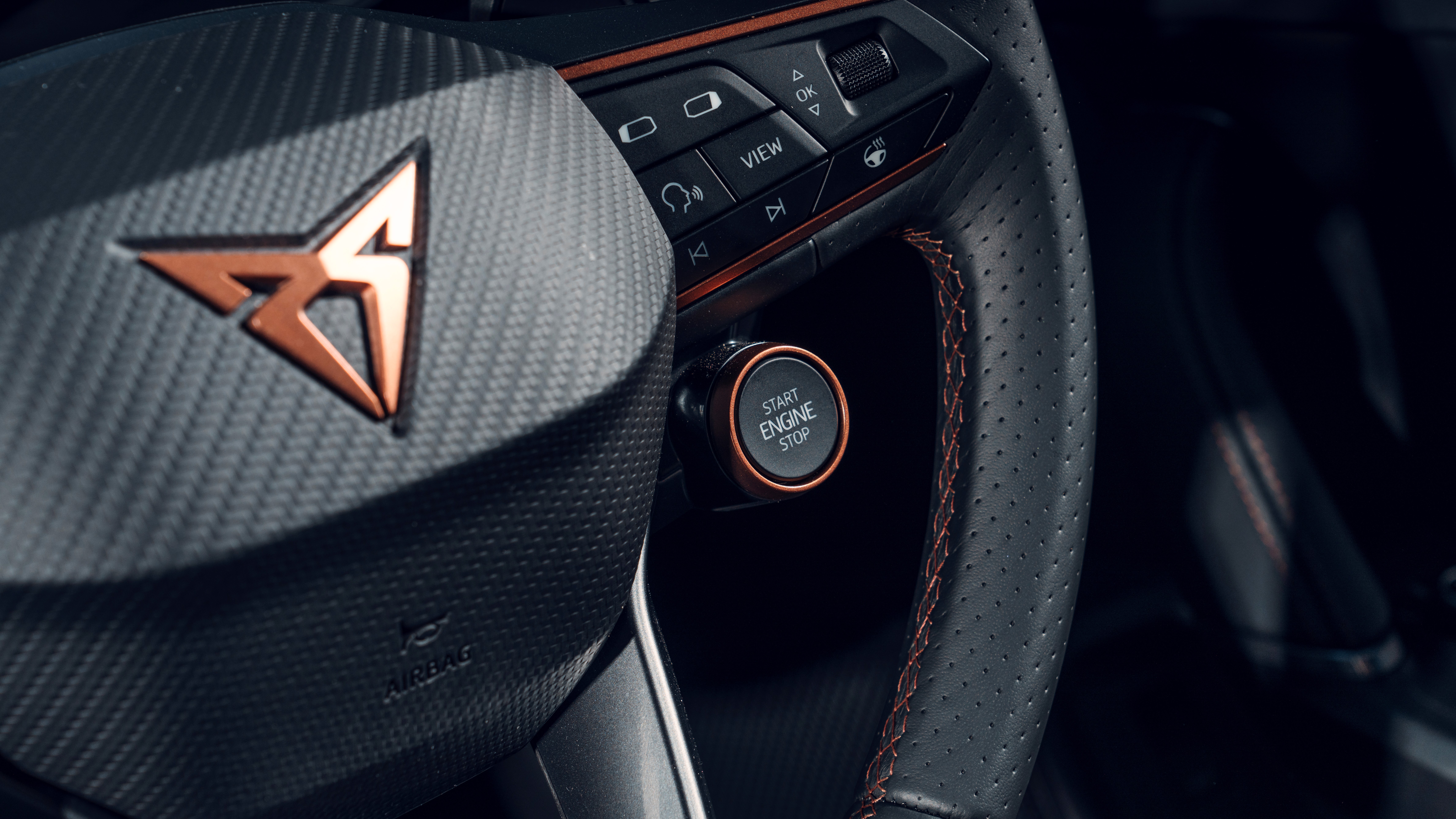
Fast crossovers: Ford Puma ST vs Cupra Formentor vs Hyundai Kona N
Want a fast crossover to spice up ferrying the kids around town? These three should have you covered
Performance crossovers start life fully equipped with disadvantages, if you think about it. A centre of gravity migrated vertically means that they’ll always be fighting to keep themselves level – taller bodies require more control, pitch and yaw manifest earlier and more aggressively. Aerodynamics are wounded, economy hurt and they’ll never quite manage to be as much fun as something that hasn’t started out weighed down with compromise. And yet they keep popping up. Audi has the SQ2, VW has the T-Roc R, and there are the three cars we have here. So people like them, even if they don’t make much actual sense.
The Hyundai Kona N, for instance, makes no sense with absolute clarity. You’ll think this after approximately 50m because the ride, even in its softest setting, is ‘sporty’ verging on ‘awful’. Put it in ‘N’ mode and it finds ridges and depressions that other cars ignore, bucks and tramlines like someone’s wedged wooden blocks in the springs and injected concrete into the dampers. If you accelerate with even mild aggression, the front axle tramps spectacularly on anything other than glass-smooth roads, the steering wheel tugging around as it fights a losing battle with the torque desperately trying to exert itself through the e-diff and suddenly very lonely front axle. And then you get grip, the 276bhp 2.0-litre four-pot nicked from the i30N hatch surfs boost and the Kona jerks itself towards the horizon like... well, like an i30N with a taller ride height and shorter wheelbase. It is, by all usual metrics, a bit of a mess. Thirty five and a bit grand of fully loaded small SUV that wants to be a gravel rally car. And yet it makes an impression. Whether it’s a good one or not remains to be seen.
The same road, exactly the same piece of road, in the Ford Puma ST feels like another planet. Yes, it has 80-odd horsepower less and a manual gearbox, but the Ford at least tries to have suspension that doesn’t try to make your vertebrae swap places, smooths its way over bumps that the Kona smashes through. The warbling music of the three-cylinder engine may be a bit fake (piped in through the stereo), but it works as a goad, and the immediate impression really is of a slightly taller Fiesta ST, from the way the car moves around under heavy braking, to the exciting hint of lift-off oversteer if you pounce through a corner. It costs five grand less than the Hyundai without options, but offers something just as practical, with a more finessed driving experience.
Which leaves the Formentor. Think of the Cupra as a control measure here; a sensible almost-alternative that will assert some semblance of normal thinking. Equipped with the most power from a familiar VW 2.0-litre turbo four-cylinder, it powers through a slick seven-speed paddleshift and front-biased all-wheel drive. In terms of handling it feels assertive rather than out-and-out exciting, never particularly hectic. It’s bigger, yes, and more expensive, but it stands to see if our smaller SUVs offer enough to tempt you away from that extra few quid on the monthly payments for a slicker, calmer, more traditional hot hatch blueprint. And one that rides well. Compared with the Kona N, this thing has the ride quality of a Phantom.
It’s also more practical; the Cupra has a big boot, and you can stuff 6ft humans in the back without too much trouble. There’s plenty of kit on this VZ2 car, including nappa leather electric seats, leather dash and heated wheel, as well as all the other stuff that comes along with the lower grades, and it all feels solidly put together. It also looks pretty darn good in Desire Red (a premium metallic option paint), the Cupra-specific two-tone body looking both sharp and subtle. There are good proportions here, and even though it manages decent interior space, it never feels unwieldy or OTT.
The Puma, on the other hand, feels much narrower, but no taller. There’s decent space in the boot, middling space for rear seat passengers, with the centre seat being more of a jump seat for small people rather than a long distance option. Kit is notably more sparse than the other two, although the ST does get a decent stereo, SYNC3 touchscreen infotainment and Recaro seats as standard. And there’s a warranty approved £675 Mountune kit that can hop it up to 256bhp if you so wish, which we would. Mainly because even though this Puma is some 80bhp down on the Kona N as standard, the talented chassis can handle quite a bit more power.
Play with the various modes and you’ll find... a great deal of very tongue-in-cheek fun.
It’s not a surprise that the Puma feels like a tall Fiesta ST, but the fact that it still gets that playful, slightly tippy-toe nature, especially on the brakes, is actually lots of fun. It might feel like it’s going to swap ends like a 205 GTi, but actually it’s just rotating a little bit – push too far and it just tucks back up and lets you get on with it. Of all the cars here, it’s the one with real handling ability.
Which is not to say that the Kona can’t get around a corner quickly, but that it does so with the kind of white eyed, spittle flecked aggression that you usually get with very angry dogs. Play with the various modes (there are quite a few), and you’ll find everything from quite hard to spine shattering. But you’ll also find a great deal of very tongue-in-cheek fun that it’s absolutely impossible not to like. Hit the N button for max attack, and the calm digital dials catch fire and become a rev-counter and various oil pressure/lap time readouts. Hit the silly red NGS button (N Grin Shift), and the Kona will find the lowest gear possible and overboost to 286bhp for 20 seconds. There are three different strategies for the (excellent) eight-speed paddleshift, an eLSD, adjustable dampers and a proper boy racer exhaust. And absolutely tonnes of kit for £35k – in fact, the Kona N only comes in one Christmas tree grade, with fancier paint being the only option. Space in the back is horrible, by the way. Unless they’re very small, back seat passengers sitting almost over the rear axle will think you have it in for them.
Three very different cars with very different characters, then. Three different price points, all with the nebulous tag of ‘performance crossover’ to umbrella them. But which one is best? Well, as we’ve mentioned, fast crossovers always seem to operate in a no man’s land between customer expectation and engineering reality. Customers want speed and handling, but also height, comfort, practicality and high mpg. Engineers just look exasperated and try and get the marketing department to pick two. And it’s the Cupra Formentor in 310 guise that ticks more boxes in absolute terms than either the Kona or the Puma. It’s fast, secure, good looking and capable of being a one-stop shop in terms of practicality and performance. And it does that by being a physically bigger car that costs more money, so the surprise is nonexistent.
It’s also marginally less fun than either of the other two when it comes to belting down an interesting road. Not by much – the Formentor is still fun – but it’s a grown-up in a room full of teenagers. It’s the car you’d buy if you could afford it and needed to live with it for three years, and the cheap lease deals seem to back up that notion. But this is Top Gear, and sensible doesn’t necessarily get you the win; driving desirability still weighs heavily on the scales of our judgement.
For that, for pure driving ability, the Ford Puma ST is the sweetest. It’s compact, has a cheerfully characterful engine, a manual box (which is still good fun) and a playful handling and ride balance that just make sense. Except for the fact that it occupies a bit of a strange niche; if you want a truly exceptional hot hatch, then the Fiesta ST at £22k still offers more silly grins, and if you want a practical small SUV, then a non-ST Puma with a few options works out better. There’s also the new Focus ST coming, and that weighs in at just under £34k. You’ve got to really want this size and shape to commit to this, although it’s also wise to note that the Puma is a good chunk cheaper than either of our other two cars.
Top Gear
Newsletter
Thank you for subscribing to our newsletter. Look out for your regular round-up of news, reviews and offers in your inbox.
Get all the latest news, reviews and exclusives, direct to your inbox.
This is Top Gear, and sensible doesn’t necessarily get you the win...
Which leaves us the Hyundai Kona N. Which is impossible. Here is a car that is so ill suited to its purpose that it shouldn’t really feature at all. The back seats are cramped, the boot is relatively small, the front axle overpowered in almost all situations. The original Honda NSX had 276bhp. As did the R32 Nissan GT-R. And the Mitsubishi Evo. A Kona should not. It rides like it has recently and fatally injured its own suspension, and has modes that will shake your eyes out. It’s noisy, hard work, physically tiring and a little bit annoying. Some of it is cheesy, other bits are childish, all of it is utterly unapologetic. And that’s where its charm lies.
The Hyundai Kona N will probably not win any other magazine’s group test. But it wins Top Gear’s, because sometimes stuffing a really powerful engine into a car that really should not have a really powerful engine is enough. The fact that Hyundai is quite obviously guffawing behind its corporate hand with this one just makes us like it even more. It’s a hugely flawed cartoon of a car that somehow, against all the odds, works. Objectively, it’s a bit rubbish. Subjectively, it just makes you laugh. And in a sector that doesn’t make sense anyway, that’s all you need.
Photography: Mark Riccioni
Trending this week
- Car Review
BMW 1 Series
- Top Gear's Top 9
Nine dreadful bits of 'homeware' made by carmakers




